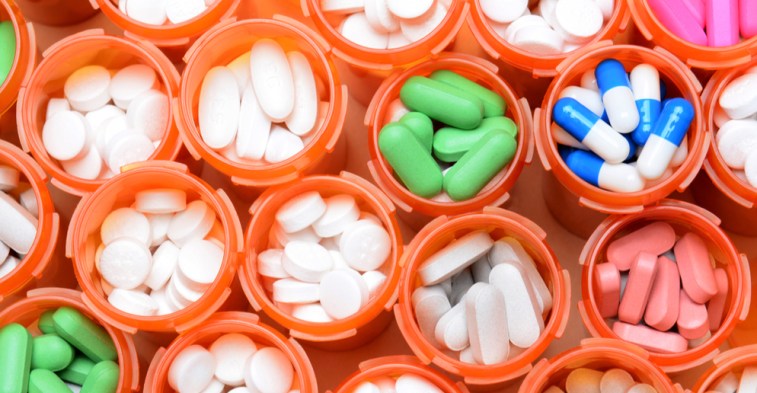WHAT TODAY’S USMCA DEBATE HAS TO DO WITH THE DRUGS OF TOMORROW
The political winds seem to be blowing in favor of a Congressional vote on the U.S.-Mexico-Canada Free Trade Agreement (USMCA) yet this fall. But before they vote, some Members of Congress want to talk over a few issues with the Trump administration’s negotiators. They are pressing the administration to lower intellectual property protections for the U.S. biopharmaceutical industry because they say the agreement’s provisions protecting original data generated by pharmaceutical inventors will drive up the price of prescription drugs.
Their arguments strike a political nerve but don’t offer a complete picture of this complex and evolving industry. The USMCA debate reflects a domestic difference in views. While the United States works to develop its regulatory framework for newer drugs, many other markets are further behind. As important as it is, the issue of data protection for biologic drugs is not well understood. We’ll try to cover the top lines.
Pieces of the Intellectual Property Puzzle
For American innovators of biopharmaceuticals, gaining access to overseas markets requires not only securing regulatory approvals; the policy environment must also be conducive to marketing their products, which includes a value-based approach to pricing, procurement, reimbursement policies – and intellectual property protections.
There are various facets to the intellectual property (IP) protections needed to incentivize massive investments in pharmaceutical innovation and to enable the recovery of those costs once a drug is commercialized. Patents are part of the package and so is the protection of proprietary data, the issue at the fore in discussions about USMCA.
These protections are particularly important to American companies. The intellectual property attached to 57 percent of the world’s new medicines was created in the United States. That’s no accident. Research and development activities flourish in countries where IP frameworks are well developed and enforced.
What is Data Protection?
To achieve marketing approval from a regulatory oversight agency such as the U.S. Food and Drug Administration and its counterparts in other countries, innovator pharmaceutical companies submit data on the outcomes of their research and years of clinical trials demonstrating the drug is effective and safe. The cost and risks of developing the original data and product fall to the inventor.
When a generic producer or producer of a “biosimilar” seeks approval, they are often afforded the short cut of relying on the inventor’s data. To ensure a balance between incentivizing drug discovery and development while also providing opportunities for lower-cost copies to become available, the inventor’s data may be protected for a period of time against disclosure to generic or biosimilar producer. During this time, any competitor is free to undertake their own data and seek marketing approvals on that basis.
For How Long?
Provisions on data protection are not new in domestic regulations or in trade agreements. Since the Agreement on Trade-Related Aspects of Intellectual Property Rights (TRIPS Agreement) in 1995, World Trade Organization (WTO) members have agreed not to disclose clinical data submitted to regulatory authorities to obtain marketing approval for pharmaceutical products, thereby protecting such data “against unfair commercial use”.
Negotiators of the TRIPS Agreement contemplated specifying that data protection should be no less than five years, but ultimately refrained from including a specific timeframe, leaving it to the discretion of WTO members in their national regulations. NAFTA, which took effect in 1994, provides a minimum of five years.
Enter a New Type of Drug
The timing of these provisions is relevant to the debate today. The TRIPs and NAFTA provisions apply to new “chemical entities,” meaning small molecule drugs – that is, most drugs on the market to date. These types of drugs are capable of being replicated through chemical synthesis to make generic drugs. For this reason, regulators tend to agree that requiring duplicate data from generics would be an inefficient use of resources and unnecessary testing of patients, as long as the generic product is proven “bioequivalent” to its reference product.
Biologics are newer medicines. They are large, complex molecules that are made from living cells to produce the required proteins. This manufacturing process is vastly more complex. A follow-on product is not identical, but rather structurally similar and thus called a “biosimilar”. An exact replica is not possible, and patients cannot automatically be switched from a biologic to its biosimilar without risk of adverse effects.
Given the differences between biologics and small molecule drugs, they are regulated differently, and the IP protections have been applied differently. Biologics are largely defined by their manufacturing processes and regulatory approval of biosimilars does not require identity with the reference product, so biologics must often rely only on process patents versus a product patent. Innovator companies argue a longer term of data protection is needed to bridge the differences in patent protection or to offset the lack of patent protections in some countries, while allowing them to recover the increased cost of generating the original data.
New Trade Provisions for Biologics
Given the longer innovation cycle and the increased cost and complexity of biologics, many governments have provided longer periods of data protection for biologics than for small molecule drugs.
In the United States, the Biologics Price Competition and Innovation Act signed into law by President Obama in 2016, provides for a 12-year period of regulatory data protection for biologics. American companies have sought the same standards from trading partners.
With new agreements in the WTO largely stalled, the focus of trade negotiations over the last decade has shifted to bilateral and regional trade agreements where provisions are often more detailed and tailored. In negotiations toward the Transpacific Partnership Agreement (TPP), the United States pushed for 12 years, but agreed to eight years for biologics from the date of first marketing approval and allowed flexibility in how data protections could be administered. When the United States withdrew from the TPP, the remaining members suspended the relevant provisions.
In the USMCA, American biopharmaceuticals again did not get everything they wanted. Canada and Mexico do not have to match the United States in providing 12 years but agreed to increase the duration of data protection to 10 years from the current standard of five years in Mexico and eight years in Canada.
Why Push Trading Partners to Increase Data Protections?
Beyond North America, the so-called “pharmerging” markets (generally the large developing countries) are growing faster than the stable developed markets. China is by far the largest emerging market for pharmaceuticals. In many developing countries, patent systems are weak or poorly enforced. Regulatory data protection provides some buffer against IP exposure, making it viable and more attractive for companies to introduce their products in that market.
Less data protection and lack of enforcement diminish the potential for U.S. exports. It also leaves the door open for competitors to access unprotected U.S. data without the originator’s authorization. Trade agreement obligations help guard against the unfair commercial use of proprietary data and expand the degree of IP protections in global markets, which is a precursor to greater diffusion of innovative drugs to patients worldwide.
Back to the Core Concerns – Availability and Costs to Patients
Critics of USMCA’s provisions argue data protections keep the prices of biologics high by delaying the introduction of biosimilars. The first biosimilar product was approved in the U.S. market in March 2015. By March 2019, 18 had been approved. Many experts suggest biosimilars have lagged in the U.S. market due to slower changes to the U.S. regulatory system and patent litigation as the industry goes through the same growing pains it did with generic regulation.
As well, drug development is an inherently expensive and risky business, characterized by high failure rates. On average, the process of discovery and commercialization takes 10-15 years at a cost of $2.6 billion. Less than 12 percent of drug candidates make it all the way from lab to patient.
Because of the complexity and high fixed costs required to develop the capacity to manufacture biosimilars, it takes eight to 10 years for biosimilars to come to market, there are fewer entrants than is the case with generics, and the cost savings realized are 10 to 30 percent off the brand, versus an average of 80 percent achievable by generics. Considering the length of time normally required to achieve safe and reliable production of biosimilars, the data protection period in USMCA is unlikely to be a cause of undue delay in getting them to market. Data protection terms are also often less than the remaining patent term.
Your Loss is My Gain
The prominent healthcare research firm, IQVIA, forecasts the biopharmaceutical industry stands to lose $121 billion between 2019 and 2023 as periods of market exclusivity end. Eighty percent of that impact, or loss for innovators, will be in the U.S. market as nearly all of the top branded drugs will have generic or biosimilar competition.
IQVIA says competition among biosimilars is on a path to grow three-times larger in 2023 than it is today. If that’s so, savings over branded biologics could produce approximately $160 billion in lower spending just over the next five years, even as overall spending on biologic drugs grows.
This is part of the business cycle of the pharmaceutical industry and why the innovators maintain strong pipelines because they have limited exclusive time in the market before competitors arrive. That’s good for patients. The data protections in USMCA are not likely to materially impact this cycle or spending. When Canada and Japan lengthened their duration of data protection, drug spending as a percentage of GDP remained nearly flat.
Reason for Optimism
Biologics are called the drug of tomorrow. They comprise nearly 70 percent of the innovation pipeline which includes some 4,500 drugs in development in the United States and another 8,000 globally.
Breakthrough products are expected for cancer treatments, autism and diabetes. This is great news, but specialty and niche products tend to come at a higher price so spending may increase as these new drugs enter the market. According to IQVIA, average spending on the brand versions will nonetheless decline from 8.2 percent of the U.S. market to 6.7 percent, a demonstration there’s a healthy market for originals and copies.
There would be no copies without the originals, which is why pharmaceutical regulatory and legal frameworks are full of public policy trade-offs to strike a balance that will support return on innovation while not impeding the availability of affordable drugs. As we make scientific progress, the systems that include IP protections must evolve to accommodate new types of drugs, new capabilities in data analytics and clinical practices, and even changing business models. Not doing so can imperil the pace of progress at precisely the moment when breakthroughs are on the horizon.
___________________________________________________________
Andrea Durkin is the Editor-in-Chief of TradeVistas and Founder of Sparkplug, LLC. Ms. Durkin previously served as a U.S. Government trade negotiator and has proudly taught international trade policy and negotiations for the last fourteen years as an Adjunct Professor at Georgetown University’s Master of Science in Foreign Service program.








Leave a Reply